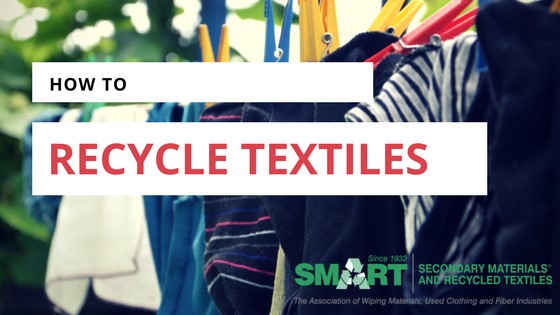
Did you know the average U.S. citizen throws away 81 pounds of clothing each year? Out of this waste, 95 percent could have been recycled, yet only 15 percent actually gets donated or recycled. Textile recycling is very beneficial in many ways including reducing the need to create more landfill space, reducing pollution created by incinerators, providing low cost clothing to low income households, and saving the environment from tons of harsh chemicals, waste products and waste water.
So, how does the textile recycling process truly work? It’s important to stay properly informed. For example, did you know that even if your used clothing donation cannot be resold and re-worn, your local thrift store will ensure it is recycled? Don’t be discouraged if you call the store and are told your textiles will be tossed – this process goes beyond the person answering the phone, and they may simply be unaware.
SMART member companies purchase excess textile donations from charities and commercial sources (i.e. nonprofits, thrift stores, hospitals, hotels and industrial laundries). The purchase of unusable donations provides additional funds to charitable organizations and serves as a critical source of revenue to support their ongoing, community-based programs.
Clothing collection bin programs are another convenient way consumers are able to recycle unwanted clothing and textiles. SMART encourages the public to educate themselves before utilizing a local clothing collection bin. Consumers should understand whether the bin operator is a for-profit or nonprofit organization, they should be able to contact the operator and/or charitable partner and they should observe that the bin is well-maintained (i.e. the area around the bin is neat and clean).
Any clothing item or household textile (bed linens, towels, curtains, stuffed animals, purses, shoes, etc.) can be reused and recycled as long as it is dry and has no odor. Even if the item is stained, torn, overly worn or out-of-date, do not throw it away; it has a use in the textile reuse and recycling industry.
Always donate and recycle – don’t throw away!